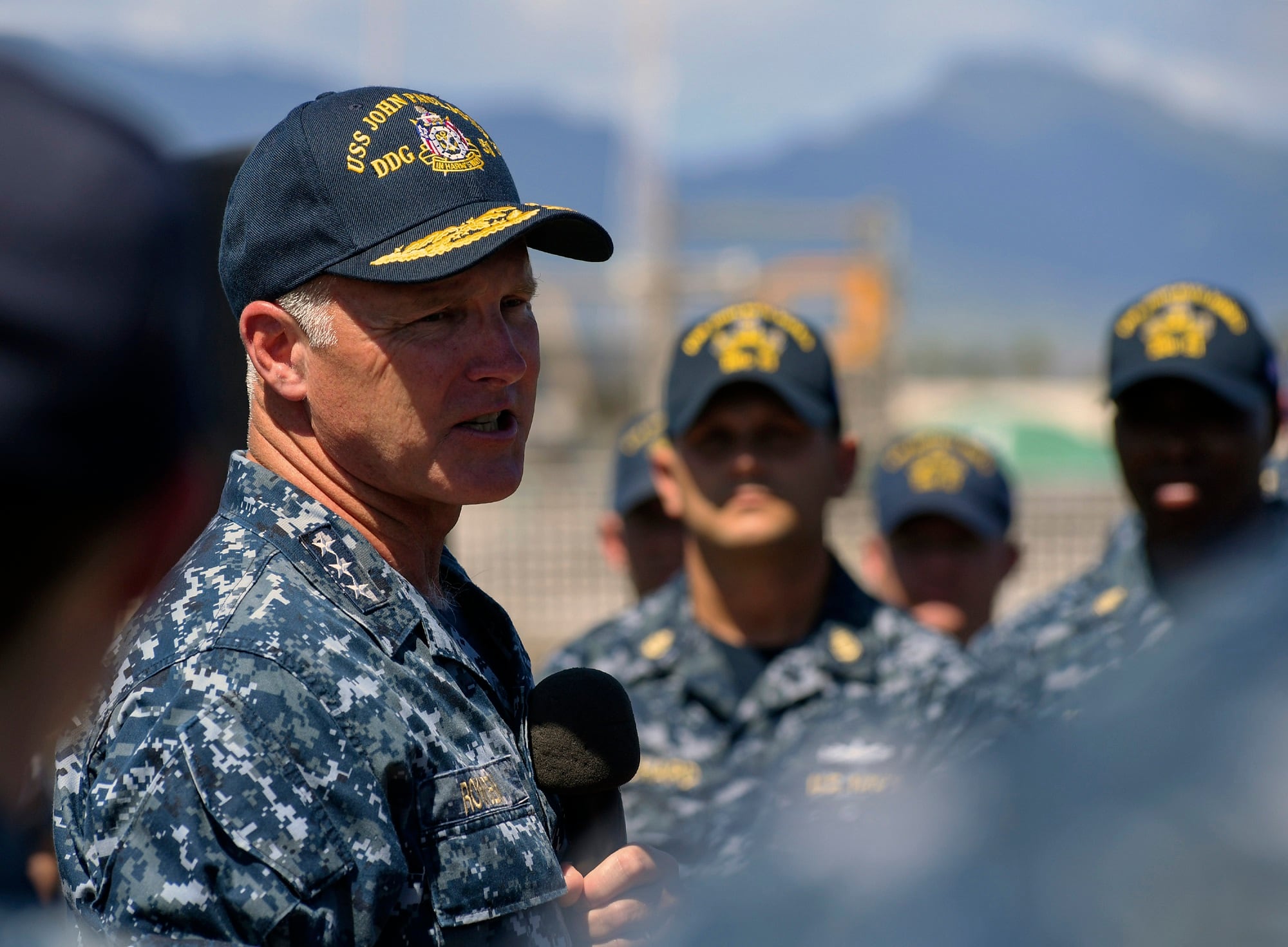The Navy’s top officer wants the surface community all moving in the same direction after a pair of collisions that claimed the lives of 17 sailors last summer.
Adm. John Richardson said Jan. 18 that his directions to the new top surface warfare officer, Vice Adm. Richard Brown, was to synthesize the various groups within surface warfare and get them all on the same page.
“There is just such tremendous talent in the surface warfare community and they’ve been through some tough times recently,” Richardson told a group of reporters. “Not just physically tough times, but culturally as well. So bringing that team together and unifying that talent – unifying the clans – so we can line up those vectors.
“I think Adm. Brown is the perfect person to take that handoff from Adm. Rowden. If we get that team unified and together, that talent will lift us up beyond our expectations.”
Brown took over the top surface warfare job from the outgoing Vice Adm. Thomas Rowden, who is set to retire. Rowden left weeks early after a recommendation from the Navy’s independent review authority recommended he be relieved. Rowden, who had announced his retirement months ago, stepped down early instead.
In a follow-up statement to Defense News, Richardson reiterated that Brown was the right person for the job.
“I want to congratulate Vice Adm. Rich Brown on his new command assignment,” Richardson said. “He has my complete confidence to lead our talented and professional surface warfare force at this critical time.
“He’s a leader who knows how to ensure our crews are ready for high-end war fighting. He’s a leader that will improve operational safety. He’s a leader that knows how to build winning teams. I strongly believe that he’s the exact right person to move the surface community forward in meaningful ways to become stronger than ever.”
Tribes
The SWO community has seesawed back and forth between focus on readiness and material condition of its ships under Vice Adm. Thomas Copeman – who preceded Rowden – to a focus on increasing lethality and reach of its ships under Rowden.
Rowden sought to reinvigorate surface warfare by giving the community a unifying goal of “distributed lethality,” a concept that sought to put as many missiles and systems on as many surface platforms as possible so that every ship on the surface was a potential threat to an enemy.
RELATED

Brown’s job will be to balance both the need to evolve the way the surface fleet fights but also ensure ships are getting maintained and sailors are getting trained, said Bryan Clark, a retired submariner and analyst with the Center for Strategic and Budgetary Assessments.
“You’ve got two major tribes developing in surface warfare,” Clark said. “There’s parts of the community that want to get back to basics: getting ships safely to sea; material condition of the ships; the basic blocking and tackling. And another that wants to move in new directions: distributed lethality, new operational concepts, changing the mission sets – the visionary part of the community. And that part would likely put new capability and concepts as a higher priority over, say, readiness.”
“That may be what Adm. Richardson is seeing,” Clark continued. “Someone has got to start pulling together the main sub communities in surface warfare and figuring out what the priorities are for the overall force.”
That will only become more imperative as the Navy begins to get littoral combat ships in numbers from both Austal USA and Lockheed Martin, and develops the next generation of small surface combatants with its frigate program, known as FFG(X).
Another priority for Brown will be to keep everyone on task and motivate his subordinates after the high-profile losses to the force in 2017 and the subsequent reviews that were harsh at times in their criticisms of how surface warfare was doing business.
“It can get demoralizing, at the surface level as a whole, with everybody looking at how you’re doing things,” said Thomas Callender, a retired submariner and analyst at the Heritage Foundation. “Even the leadership that’s there can get demoralized.
“Getting the leadership together and figuring out: ‘Here’s where we are, how do we best get at it … What are the things that can make the biggest impact in the shortest time.’”
Brown is a 1985 Naval Academy grad who has spent the vast majority of his time at sea on cruisers and destroyers. He has previously commanded the destroyer The Sullivans, the cruiser Gettysburg and Carrier Strike Group 11.
David B. Larter was the naval warfare reporter for Defense News.








